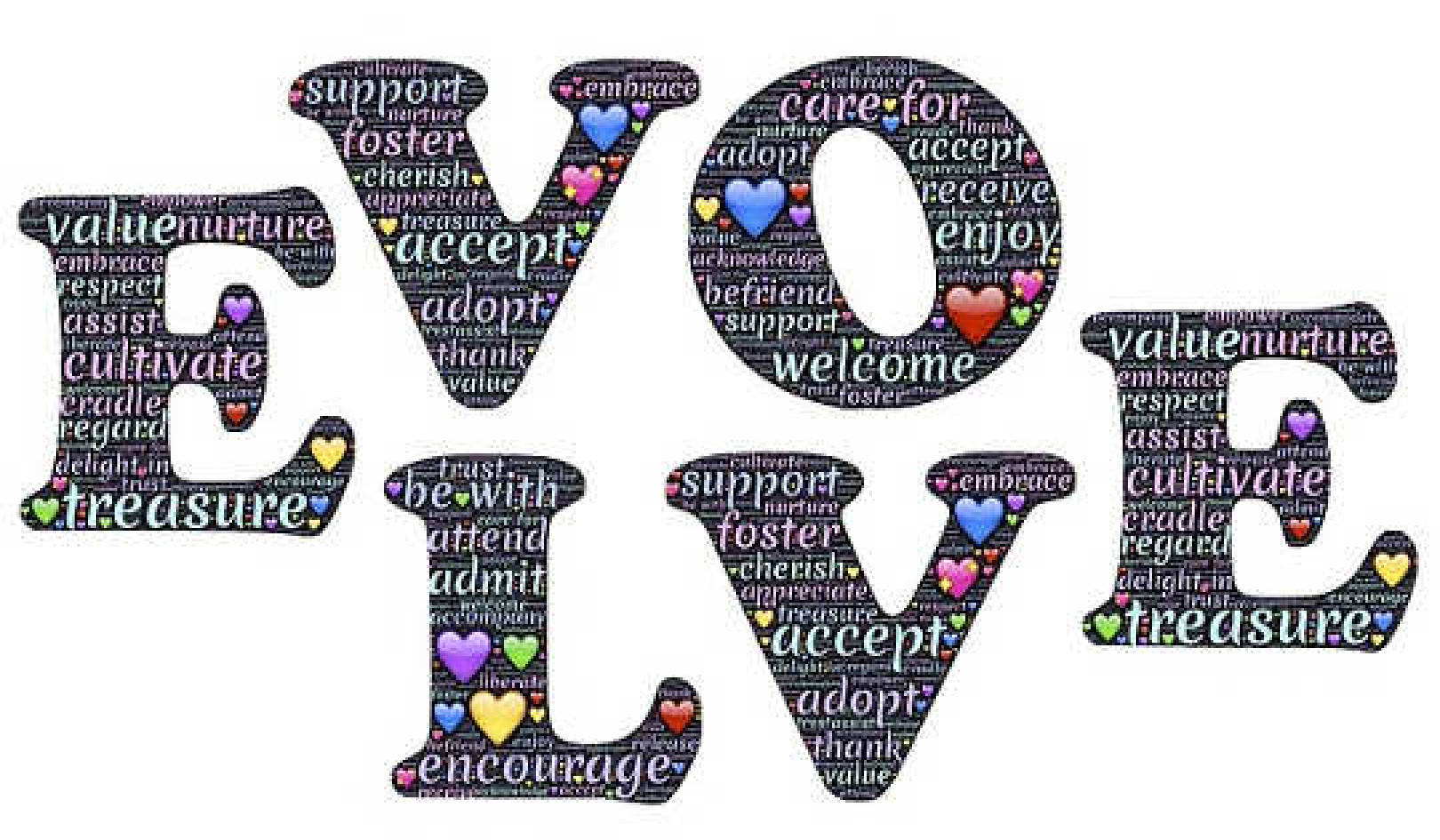
Authenticity is a word that you hear all the time, but what does it really mean? Something that is authentic is not copied. It’s genuine, real and true.
Each and every person comes into this life as a unique expression of Source consciousness. This means each person comes in with a unique essence, like an energetic signature. We come in with a unique purpose, along with unique thoughts, feelings, desires and needs. All this and our role within the greater universe is embedded in our essence.
Our life experience is then a process of unfolding. You can picture your essence as a unique pearl contained inside of a tightly closed lotus flower. In a perfect world, that lotus blossom would bloom naturally to reveal the pearl within to the world. The parenting and socialization process would be a process of enabling every child to unfold in that way.
If we didn’t interfere with this process and simply met the unique needs of each child in front of us, it would naturally happen this way. But this isn’t the world we live in.
Becoming Fake In Order to Be Loved and Safe
When we come into the world, the people around us don’t look at us like gifts to nurture so we can unfold and they can see the unique pearl within us. The people around us look at us as if we are a raw substance to mold into what they think is best for us and for them. Anything that remotely resembles something that will meet with disapproval is something that we feel vulnerable about. And we begin a process of splitting ourselves.
We put forward only the things about us that make us loved and safe in the world. The rest, we keep hidden. It means that our personalities are, in essence, fake. We became copies of other people, and therefore we don’t reflect what is true at our core. As such, we end up having to sort through pretenses to find what is real about us. It can feel like fumbling around in the dark.
Besides the fact that inauthenticity leads to an overall miserable life, the biggest problem with being inauthentic is that it makes true connection impossible. To be loved to our core, we have to actually expose it. If we want genuine connection, we need to be willing to show our genuine self.
Making Your Insides and Outsides Match
The simplest way to understand authenticity (beyond it being an uncovering of your personal essence) is that authenticity is the conscious mending of the incongruencies between one’s inner self and outer self. So authenticity is when your inside matches your outside.
You have most likely heard the term “a wolf in sheep’s clothing”. This is an example of inauthenticity. The wolf is not a sheep; he is showing himself as a sheep to the outside when inside he is a wolf. It would be no better if a sheep was in wolf’s clothing. That too is an example of inauthenticity.
Look around you and your friends, and you will find all kinds of incongruences between someone’s inner and outer self. When a person works at a job they hate, it’s inauthentic because their outer work does not match their inner desires for work. When a person says they like someone or acts as if they do, when the truth is they hate them and want to be nowhere near them, it’s inauthentic. When a person says they aren’t artistic, but the reality is that they suppressed that inner talent long ago, it’s not authentic.
When we care so much about seeing ourselves as good that we cannot admit to aspects within us that wouldn’t be seen as good, we are being inauthentic. Consider how some people have two Facebook accounts, one for the people they know from work and family and a second one for the things they are actually interested in but that they might be judged negatively for. That is being inauthentic. When we are gay but we pretend to be straight, we are being inauthentic.
It’s not hard to see how our entire society today is based on pretenses. But the time has come for this to end. It’s one of the greatest barriers to awakening and to connection. So the question to live by is: “Is there any incongruence between my outer self and inner self?”
In an ideal world, we would all be transparent, honest and authentic 24 hours a day. And this is the world I want to create.
The Willingness To Look Bad
In order to become authentic you have to be willing to look bad to yourself and others. Or at least confront the incredible terror you have of doing this. We spend our whole lives trying to avoid shame and fear. Shame is the number-one enemy to the human ego. But this means that we are constantly avoiding anything that is real about us that could possibly make us look bad to ourselves or bad to others.
In this scenario, we are never actually able to face and work with what is real about us. Most often, we only stop this when we are in so much pain as a result of being inauthentic that we are finally willing to deal with the negative consequences of our authenticity. I’m asking you to make this leap before you get pushed up against a wall like that. Accept what is real about yourself, regardless of whether you judge it as bad or good.
Acceptance is the opposite of denial and avoidance. What does it mean to accept something? To accept is to recognize something as valid or correct. Acceptance makes you content to receive something and digesting it as truth instead of fighting to not acknowledge it and not take it in.
Acceptance has nothing to do with condoning or condemning something. It has nothing to do with whether you want to change something or not. It’s simply about being able to acknowledge something as valid enough to let it in your life.
The Heart of Authenticity
The heart of being authentic is being vulnerable. The reason we aren’t authentic is because we are afraid of what will happen if we are. We are afraid that we will be rejected, unloved or not received. Many people think they are being authentic when they aren’t because they are only exposing part of what is true.
Here is an example of what I mean. You could think it’s authentic to express the following thought to someone else, “You know what? You’re just too self-centered to pay attention to anyone except yourself and where you want to go.” But this is actually just a defense. And it only represents your anger, when that is a small fraction of what is real. Being authentic might look something more like this: “That was really scary. It made me feel like I was invisible and didn’t matter.”
One of the best ways to figure out how to express authentically is to ask yourself, “What is the opposite of being defensive in this scenario?” Whatever you are trying to defend is in fact the vulnerability that you need to be authentic about. Relative to authenticity, expression is about telling the whole truth, not just parts of it. And that includes a whole range of emotions.
The root of authenticity is knowing how you feel and admitting it to yourself, and subsequently to others. Your emotions then are like a compass that brings you straight to awareness. In the same way that a compass tells you where you are located in space and what direction to go, your emotions tell you what vibration you are currently holding and what direction to go to improve that personal frequency so the circumstances of your outer life will come into alignment with your essence.
Your emotions are also the doorway to discovering the subconscious limitations that are preventing your authenticity. We don’t collectively understand what emotions are and what purpose they serve. We are essentially living in an emotional dark age.
The Self-Awareness Protocol
We will only ever get to what is real about us if we admit to the complete truth about how we feel. We will only be able to really connect with other people if we learn to express the truth of how we feel to others. There are five basic parts that make up the complete truth about how we feel in any given situation that upsets us. They are, in this order: anger, pain, fear, understanding, and love.
Most of the time, we only allow ourselves to be aware of and express one part of the truth. For example, if we go out in our car and get rear-ended, we may immediately get really, really angry and blame the person who rear-ended us. We may only let ourselves and others become aware of the anger part of the truth about how we felt about getting rear-ended. When, really, the complete truth is much more complex and involves thoughts that correspond to each of the main emotions: namely anger, pain, fear, understanding, and love.
In other cases, we may only let ourselves be aware that we are hurt or afraid due to a specific conflict, but never let ourselves or others become aware of the anger we feel. It’s a natural defense. It’s actually a common behaviur, which we learn in our formative years, to only allow ourselves to explore and express certain aspects of the complete truth and not others. But healing and self-love come from knowing and expressing all of it.
The following exercise is about uncovering the full truth of how you feel.
HOW TO DISCOVER YOUR TRUTH
To start with, pick a situation that is upsetting you. And, as if you were bleeding yourself dry of emotion and thoughts, write down everything you can relative to each layer of truth, through each of the five emotional states.
While doing so, don’t move on from one part (such as anger) to the next part (such as pain) until you feel that you have expressed and exhausted all thoughts and emotions that correspond to each specific part.
Remember that emotions are healthy, so don’t suppress any emotions that come up. Let yourself get really mad, let yourself cry with ugly sobbing and let yourself feel hope. Let yourself fully experience whatever emotions come to the surface without judgement.
In order to help the flow of truth, I have included a list of prompts below. Think about any upsetting event or situation in your life and write anything and everything you can about each of the following emotions.
Anger
What am I angry about?
What/whom do I blame and why?
Whom/what do I feel resentment for and why?
It makes me so mad when...
I’m completely fed up with...
I hate...
Pain
What about this makes me so sad?
I am so hurt by...
I feel so disappointed that...
Fear
What about this makes me so afraid?
I’m scared that...
It scares me when...
Why does it scare me?
What about this embarrasses me?
What about this makes me feel insecure?
What is the deep wound hiding underneath the anger and sadness?
What painful thing does this situation remind me of?
Understanding
I regret...
I’m sorry that...
What part of this situation do I take responsibility for?
I didn’t mean to...
I understand that...
I know sometimes I ...
What do I want forgiveness for?
Love
Deep down, I have the purest of intentions and they are...
Deep down, in my heart, I want...
I promise to...
What are some solutions to this situation that I can think of?
I hope that...
I feel gratitude for...
I forgive...
By digging down through these emotions using this technique, you reach your full truth. When you start to process upsetting things in your life this way, you begin to bring out your authentic self. What you discover represents the deepest truth in you about this situation.
Being In A State of Authenticity
Once you have that deepest truth about how you feel in your situation, you can directly address that and express that to others. Doing so means you are in a state of authenticity and you can expose the vulnerability that you were hiding and you can start to take loving care of that vulnerability.
In doing so, you have uncovered your authentic self, which is what you need in order to truly connect intimately with other people and overcome loneliness and isolation.
©2018 by Teal Swan. All Rights Reserved.
Published by Watkins, an imprint of Watkins Media Limited,.
www.watkinspublishing.com
Article Source
The Anatomy of Loneliness: How to Find Your Way Back to Connection
by Teal Swan
 Loneliness, is a feeling of separation or isolation, it is not necessarily the same as the physical state of being alone. This book is for people who suffer from loneliness, the kind that cannot be solved by simply being around other people. Their aloneness is a deeply embedded pattern that is both negative and painful; it is often fueled by trauma, loss, addiction, grief and a lack of self-esteem and insecurity. In The Anatomy of Loneliness, Teal identifies the three pillars or qualities of loneliness: Separation, Shame and Fear and goes on to share her revolutionary technique; The Connection Process.
Loneliness, is a feeling of separation or isolation, it is not necessarily the same as the physical state of being alone. This book is for people who suffer from loneliness, the kind that cannot be solved by simply being around other people. Their aloneness is a deeply embedded pattern that is both negative and painful; it is often fueled by trauma, loss, addiction, grief and a lack of self-esteem and insecurity. In The Anatomy of Loneliness, Teal identifies the three pillars or qualities of loneliness: Separation, Shame and Fear and goes on to share her revolutionary technique; The Connection Process.
Click here for more info and/or to order this paperback book and/or download the Kindle edition.
About the Author
 TEAL SWAN was born in Santa Fe, New Mexico with a range of extrasensory abilities, including clairvoyance, clairsentience, and clairaudience. She is a survivor of severe childhood abuse. Today she uses her extrasensory gifts as well as her own harrowing life experience to inspire millions of people towards authenticity, freedom and joy. Her worldwide success as a modern spiritual leader has earned her the nickname “The Spiritual Catalyst.” She is the bestselling author of three books; The Sculptor in the Sky, Shadows Before DawnandThe Completion Process. Visit her at https://tealswan.com/
TEAL SWAN was born in Santa Fe, New Mexico with a range of extrasensory abilities, including clairvoyance, clairsentience, and clairaudience. She is a survivor of severe childhood abuse. Today she uses her extrasensory gifts as well as her own harrowing life experience to inspire millions of people towards authenticity, freedom and joy. Her worldwide success as a modern spiritual leader has earned her the nickname “The Spiritual Catalyst.” She is the bestselling author of three books; The Sculptor in the Sky, Shadows Before DawnandThe Completion Process. Visit her at https://tealswan.com/
Books by this Author
at InnerSelf Market and Amazon


























